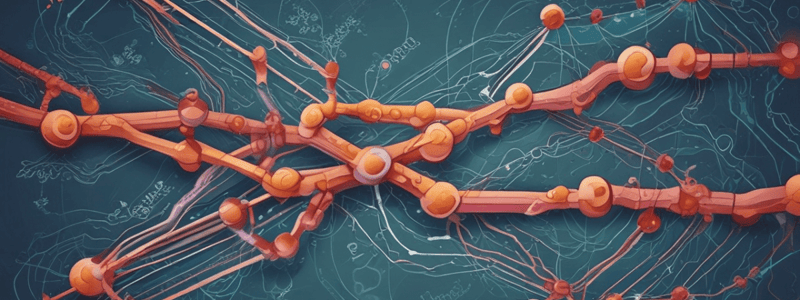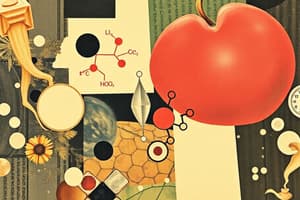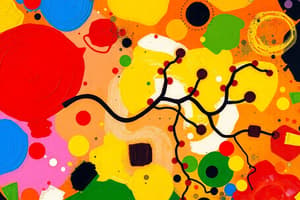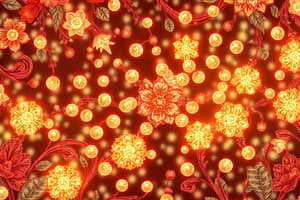Podcast
Questions and Answers
What is the source of eicosanoids?
What is the source of eicosanoids?
- 20 carbon polyunsaturated fatty acids (correct)
- 22 carbon polyunsaturated fatty acids
- 18 carbon polyunsaturated fatty acids
- 25 carbon polyunsaturated fatty acids
What do eicosanoids function as in the body?
What do eicosanoids function as in the body?
- Systemic hormones
- Enzymes
- Local hormones (correct)
- Neurotransmitters
What is a characteristic of eicosanoids in terms of their action?
What is a characteristic of eicosanoids in terms of their action?
- Systemic effects
- Long-term effects
- Hormonal effects
- Discrete and tissue-specific effects (correct)
Which of the following is NOT a type of eicosanoid?
Which of the following is NOT a type of eicosanoid?
What is the effect of eicosanoids on the digestive system?
What is the effect of eicosanoids on the digestive system?
When do eicosanoid levels increase?
When do eicosanoid levels increase?
Flashcards are hidden until you start studying
Study Notes
Eicosanoids
- Eicosanoids are a family of biologically active substances derived from 20 carbon polyunsaturated fatty acids, such as arachidonic acid.
- Members of the eicosanoid family include prostaglandins, thromboxanes, leukotrienes, and epoxy-eicosatrienoic acids (EETs).
- Eicosanoids function as local hormones, synthesized and exerting their biological actions in the same tissue.
- They have physiological and pathological effects on various systems, including:
- Cardiovascular system
- Pulmonary system
- Reproductive system
- Digestive system
- Examples of their effects include:
- Inducing abortion or pregnancy ulcers
- Site-specific actions during shock and after injury
- Diverse functions, such as:
- Bronchoconstriction
- Bronchodilation
- Vasodilation
- Vasoconstriction
- Physiologically and pathologically, eicosanoids are local hormones, synthesized and exerting their action in a tissue, with actions usually discrete and related to the physiological demands of the tissue.
Studying That Suits You
Use AI to generate personalized quizzes and flashcards to suit your learning preferences.




